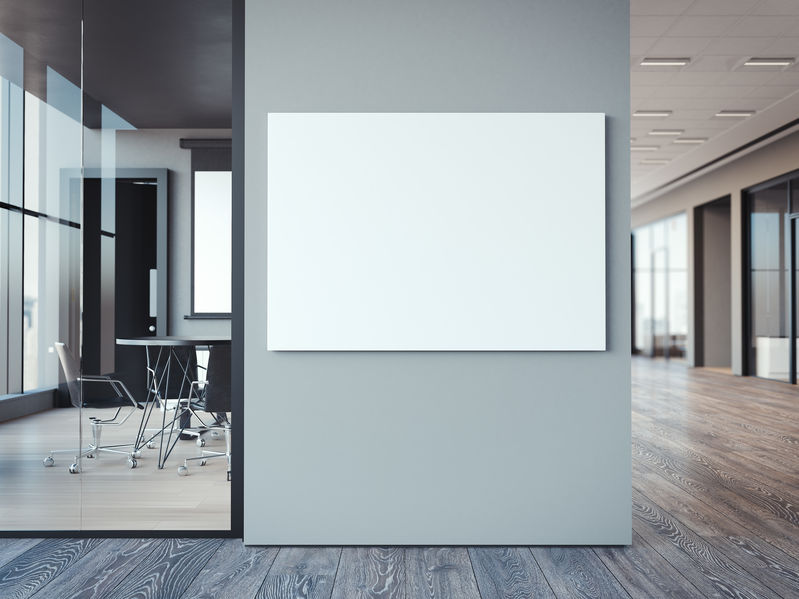Overview
 Public art has become increasingly prevalent at corporate headquarters and commercial properties. Some companies use it to beautify buildings or campuses that they own. Many commercial real estate developers have installed it because they believe it enhances the value of their properties. In some localities, art installations are required as part of new projects. If your company is considering buying a piece of public art, or buying a property that already has public art installed on it, you should know that the artist may have rights that impact what you can and cannot do with their work.
Public art has become increasingly prevalent at corporate headquarters and commercial properties. Some companies use it to beautify buildings or campuses that they own. Many commercial real estate developers have installed it because they believe it enhances the value of their properties. In some localities, art installations are required as part of new projects. If your company is considering buying a piece of public art, or buying a property that already has public art installed on it, you should know that the artist may have rights that impact what you can and cannot do with their work.
The Visual Artists’ Rights Act (VARA), an amendment to the copyright laws, controls what can and cannot be done with existing public art installations. While the Copyright Act generally protects certain economic rights, VARA protects so-called moral rights, which are of a spiritual, non-economic and personal nature. These rights protect the artists in two basic areas: attribution and integrity. The right of attribution protects the artist’s right to be recognized as the author of the work. The right of integrity, the most litigated right under VARA, grants the artist the power to protect the artist’s work from intentional mutilation, distortion, modification and destruction.
VARA covers multiple forms of visual art, such as paintings, sculptures, drawings, prints and still photographs. In the corporate and commercial real estate context, it often impacts public sculpture. Murals that are incorporated into a building have also been the frequent subject of litigation under VARA.
On its face, VARA suggests that an owner of public art must maintain it inviolate, not changing it whatsoever. That’s not entirely true. Modification of the work that occurs naturally by passage of time is not a violation. Similarly, modification of the public presentation, such as by placement or lighting, is not a violation.
VARA provides for two general outcomes, depending on whether or not the work is removable. If a work is not removable without destroying, mutilating, modifying or otherwise altering it, an artist’s right of integrity attaches and he may sue to prevent destruction unless the right is waived in writing signed by the artist and the building owner. If a work is removable without destroying, mutilating, distorting or otherwise altering it, the building owner must give 90 days’ written notice to the artist, notifying the artist of the building owner’s intended action affecting the visual art.
Violation of VARA by a building owner can expose the owner to a suit for an injunction and damages. Statutory damages range from a $750 minimum to a $30,000 maximum, increasing to $150,000 for willful infringement and decreasing to $200 for innocent infringement.
In a number of cases, VARA has been applied to protect murals painted on the side of a building. These cases have resulted in settlements and judgments in the seven figures, so close attention to VARA is critical for the owner of a building containing a public mural.
Buying and Installing Public Art
If your company is buying an existing piece from an artist directly, from a gallery, or at auction, you should assure that the artist has waived his or her moral rights. If you are buying an existing piece directly from an artist or a gallery that represents the artist, you should have a written agreement signed by the artist waiving his or her moral rights. The waiver should be comprehensive and should specifically identify the work for which the moral rights are being waived.
If you are commissioning the work, you will want to make sure that it is considered a work made for hire. With a properly drafted agreement, the employer or entity commissioning the work will own the copyright, and the moral rights.
Buying a Building with Existing Public Art
If the new owner wants to remove the public art from the building, they must make a diligent, good faith attempt to notify the artist of their intended action and give the creator an opportunity to remove the work or pay for its removal. Obviously, in the case of a mural, additional complications might arise. If the work is removed by the creator, then title to the work reverts to the creator.
So, before buying that building that has public art on the property, do some due diligence. Find out:
- Is there public art that the seller plans to transfer to the buyer?
- Can I live with the public art as it exists, without altering it?
- If not, is the artist still alive?
- If so, have they waived their moral rights in writing?
If the artist is still alive and he has not waived his moral rights, a new building owner may be living with that art for years, or be subject to liability if the owner removes it without giving proper notice.